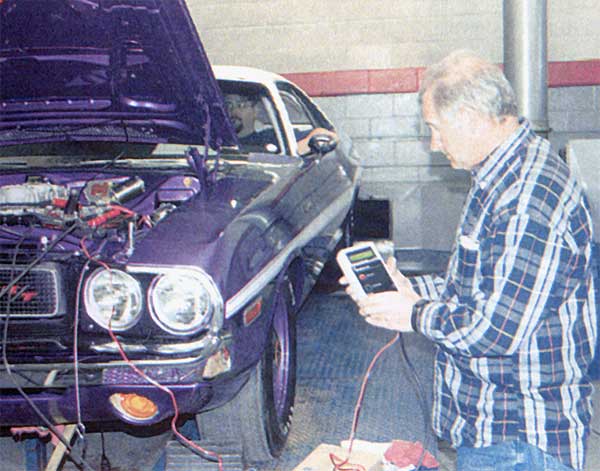426 Hemi Challenger GTX
Excerpts from Muscle Car Enthusiast, September, 2004, by Dave Dudek, Jr.
There are several methods people use to get their machines tuned properly, and each method offers strengths and weaknesses:
- You can measure the exhaust gas temps (EGTs) on each cylinder. This is done by welding a bung in your header or by drilling and tapping your exhaust manifolds about one inch from where the exhaust exits the head. This method measures the temperature of the exhaust gases as they exit the cylinder head. This method of tuning is very time consuming and generally expensive — most weekend enthusiasts will never go to this extreme to tune their cars.
- A more commonly known tuning technique is “reading the plugs.” This might be the most abused and misunderstood tuning tool used. A professional can tell plenty about how your engine is tuned by reading the plugs, the key word being professional
- Another device used to help aid in tuning is a “narrow band” analog rich/lean gauge. This device uses an oxygen (O2) sensor. However, because of the narrow volt range of zero to two volts, many consider this to not be accurate and many professionals discount it completely.
To test the LM-1 meter we took our 1970 Challenger R/T test vehicle to AP Engineering Clinton Township, Michigan. AP Engineering is one of the premier dyno and tuning facilities in the state of Michigan, and they just happened to have a high-dollar profession-grade wide band O2 setup. What better way to test the accuracy of Innovate Motorsports’ new product?
When we fired up the Hemi and made our first dyno pull, the LM-1 meter showed the air/fuel ratio was 11.4 (way rich) at peak power (501 hp). We then switched from the LM-1 meter to AP Engineering’s professional wide band set-up and made another pull. Everybody was floored when the computer spit out 11.3 at peak power — the LM-1 was almost dead-on! Peak power was 501 again.


A reading of 11.4 is rich, so we put smaller jets in the carbs and made another pull. Horsepower jumped to 522 and the AFR hit 12.3 at peak hp. Again, we swapped in the LM-1 meter and made a confirmation pull. The LM-1 was dead on at 12.3. That number is still rich so we made another jet swap and fired up the Hemi once again. We were rewarded with 531 hp and the A/F securely at 12.9. Again we swapped back to AP’s pro set-up and another pull confirmed the LM-1 was almost dead on.
For the complete text of this article visit: http://www.musclecarenthusiast.com/
